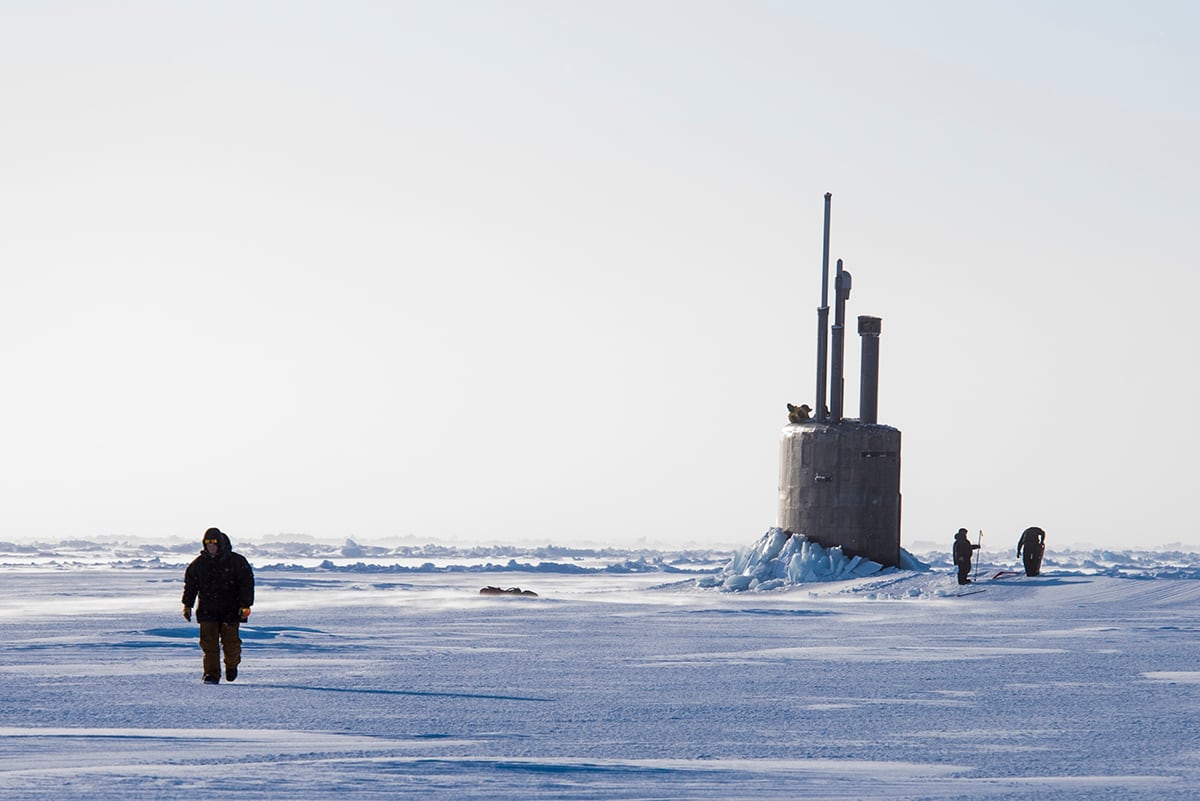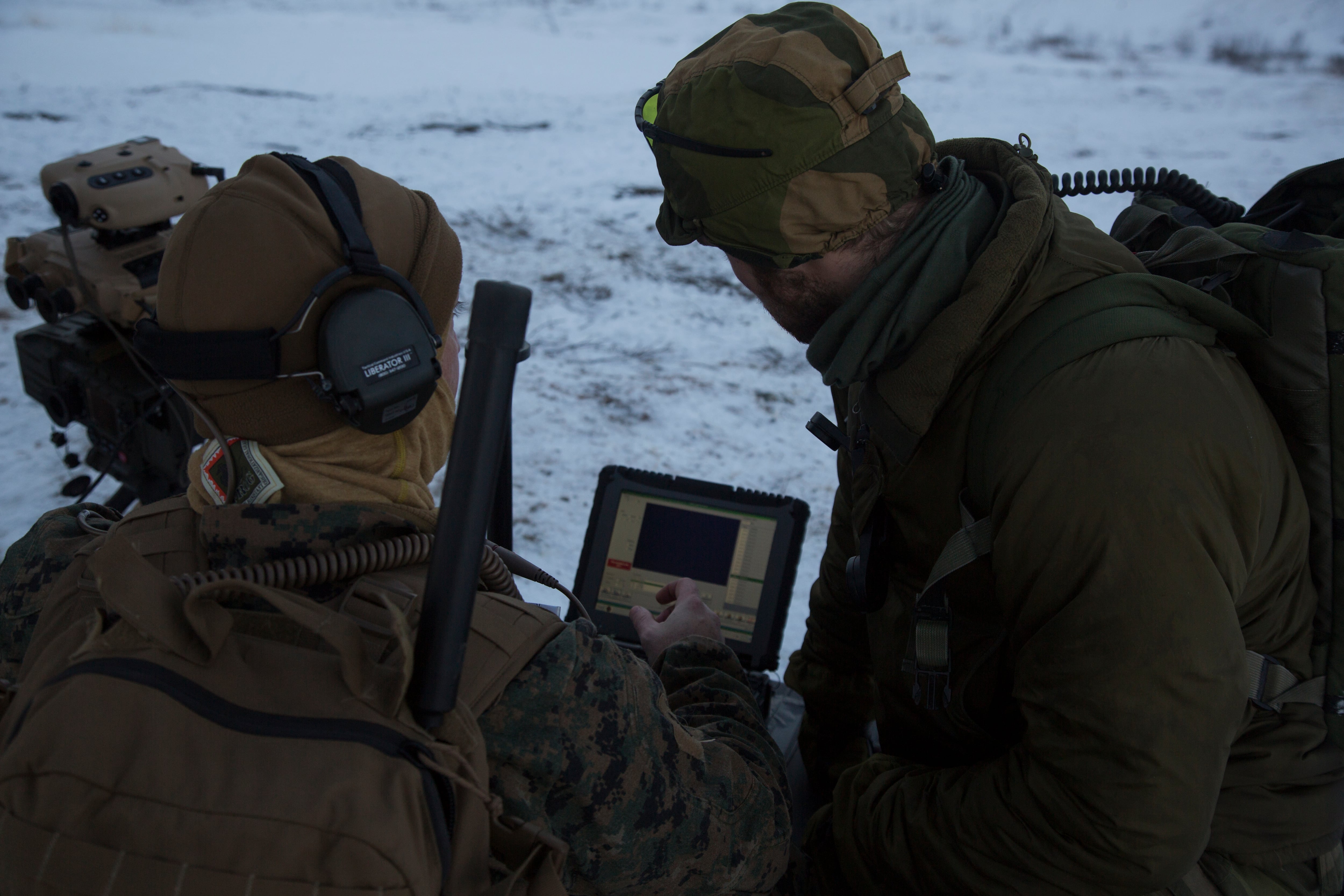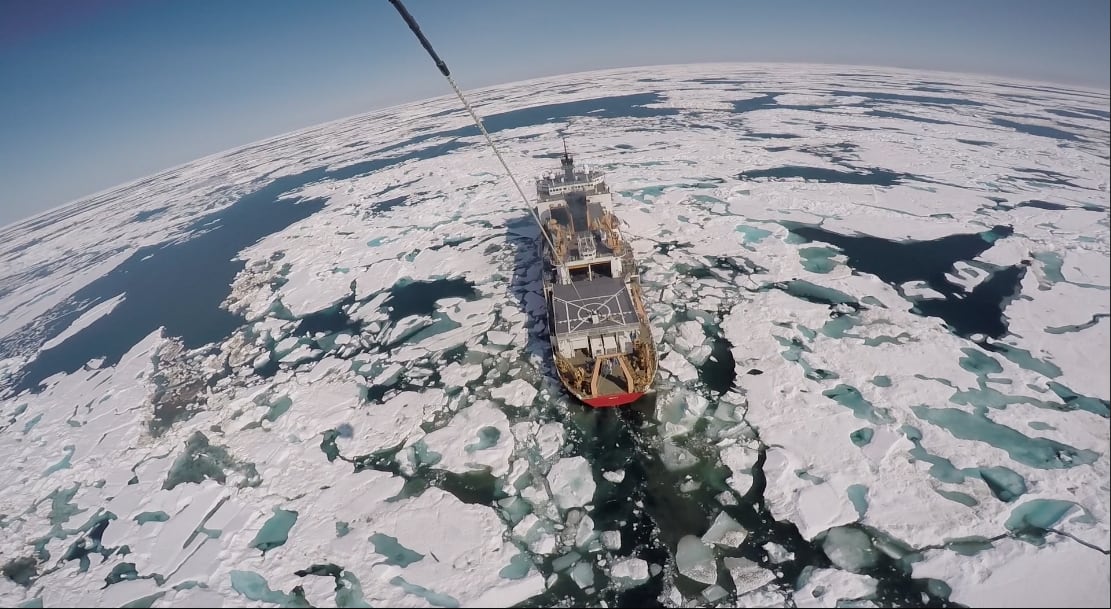The Navy, Marine Corps and Coast Guard are working to define their new roles in the Arctic, but a few new icebreakers won’t solve their lagging capabilities to project power and deter rivals in the region, experts from the Naval War College said at a panel Wednesday.
By 2020, Russia is expected to have full radar coverage, S-400 air defense and anti-surface missile coverage, a fully operational communication network and an underwater surveillance system bridging the over 1,600 miles from the Bering Strait to the Bering Sea, right off Alaska’s coast, a professor at the Naval War College and former chief of the Norwegian Navy said at the panel.
“You need to start looking at the Arctic as it is, not what you want it to be,” said retired Norwegian Rear Adm. Lars Saunes. “And tension between NATO and Russia is increasing in the Arctic.”
Both the U.S. Navy and the U.S. Coast Guard released new Arctic strategy outlooks this year. But the language inside those documents left much to be desired among those who believe tensions between Russia and NATO are intensifying.
“Even Denmark now wants to send their fighter pilots to Greenland to ensure their territorial integrity from Russian fighters and bombers,” Saunes said.
“You can see them [Russian aircraft] in Alaska, you can see them along the Norwegian coast," he added. "And is it low tension when your neighbor is starting to target your radar installations, your critical infrastructure, showing up with a submarine along your shores with ballistic capabilities?”
Navy challenges
The Navy’s Arctic strategy document released in January reflects a “struggle to adapt," said Thomas Culora, dean of the Center for Naval Warfare Studies and a retired Navy captain.
“The Navy is about blowing things up. As far as I can tell, there’s nothing to blow up in the Arctic. And unless this changes, the Navy is going to continue to struggle with how to change and adapt," Culora said.
Compared to the target rich environments of the Persian Gulf, the Arctic is a region that draws its importance mainly from the bounty of mineral and hydrocarbon resources becoming increasingly accessible under the warming ice.
The region will also be important from a commercial standpoint due to the shipping lanes that will become more navigable in the coming decades, potentially shaving two weeks off the Suez and Malacca transit routes that are already geostrategic flash points the U.S. Navy watches intensely.
But projecting power into the Arctic in the same way requires a specialized fleet the sea service doesn’t currently have. And shifting to that Arctic fleet design saps the Navy from its goals in the Pacific Ocean and Middle East.

“You can buy a specialized asset like an icebreaker, but when you start hardening frigates and other vessels to work up there, you’re starting to impact the Navy’s ability to be flexible in other regions,” Culora said.
Ballistic missile submarines are able to operate relatively well in the Arctic region, but a submarine isn’t traditionally used to promote freedom of the seas. P-3 Orion surveillance aircraft can also provide aerial protection of sea shipping lanes, but "the Air Force can do that, and probably do that more effectively,” Culora added.
And while the secretary of state has recently talked about future Navy transits through the Arctic, that would be a high-risk endeavor, he said.
“Any ship you send through there is going to probably need some sort of ice-breaking capability accompanying it,” Culora said.
The Navy is also trying trying to use assets in the Arctic that can balance between security and stability, Culora added. Increasing sea patrols and other operations is the traditional way Navy’s increase security in a region. But the Arctic is a sensitive area.
“This is tricky in the Arctic," Culora said. “An increase in activities could lead to instability, especially if it’s misperceived by near-peers, by Russia, by China.”
Marine Corps challenges
A war in the Arctic region to defend a NATO ally like Norway or even the U.S. state of Alaska wouldn’t just be a challenge to the big systems of the sea service. Ground forces, notably the Marine Corps, will find the high latitudes and cold weather taxing on their bodies and equipment.
That’s why Marines have been rotating to Norway since 2017 to train for such a contingency.
“There’s no better place to prepare than the Nordic Arctic region,” said Marine Lt. Col. Kenneth Sandler, military professor at the Naval War College, who noted that many Arctic challenges deal blows to U.S. technology.
Unique difficulties of communicating in the Arctic include severe magnetic storms, the polar cap absorption phenomena and high mountains with heavy metallic concentration, all of which are detrimental to radio communications, according to Sandler.

Satellite communication isn’t any better due to the extremely low take-off angle needed to access equatorial geostationary satellites, he added. The high latitude also impacts the refraction of radio signals through the atmosphere, further reducing communications.
“When it comes to SATCOM in the Arctic, the Russians are ahead of the U.S,” Sandler said. "They’ve been using highly elliptical orbiting satellites called the Molniya constellation for over 50 years. These provide the most efficient SATCOM coverage for that reason.”
The U.S. and Norway are partnering to close that gap by acquiring highly elliptical orbiting satellites as well, he added.
“If that wasn’t enough, the Aurora Borealis usually peaks about every 28 days, leading to a total blackout of high frequency communications,” Sandler said.
Cold, damp environments also shorten battery life on all equipment and exacerbates maintenance issues. That’s to say nothing of the immense physical and mental toll the cold places on anyone operating in the Arctic.
Coast Guard challenges
The Coast Guard has been more aggressive in pushing out its Arctic strategy.
While the Navy’s document was 14 pages, released quietly and has yet to be published online, the Coast Guard’s document was 48 pages and was pushed out to the media “pretty strongly,” said Rebecca Pincus, an assistant professor at the Naval War College who was the primary investigator at the U.S. Coast Guard’s Center for Arctic Study and Policy.
The reason for the difference in strategy roll-outs is simple: “The Coast Guard is seeing ongoing present-day growth in its Arctic missions and its struggling to find the resources to cover this mission growth," Pincus said. "On the other hand, the Navy is facing demand signals in the Pacific and the North Atlantic, and sees the Arctic as more of a future concern.”
The Coast Guard is in the process of recapitalizing its security cutter fleet so that it can actually respond to its new mission in the frozen Arctic reaches. The service’s first polar security cutter is expected in 2024.

“That polar security cutter will be immediately sent down to conduct mission in Antarctica, so we’re really looking at the second or third ship in the series to increase U.S. surface presence in the Arctic region,” Pincus said.
That points to the ongoing resource challenges the Coast Guard faces in putting a security presence in the region.
Former Norwegian Rear Adm. Saunes also criticized the lack of armament on Coast Guard vessels beyond small arms.
“How is the Coast Guard to defend without any armament?” he said, adding that in Norway, security vessels for the Arctic “are armed underwater, on the water and in the air, because we know the environment we are going into."
Presence and soft security will not be enough, Saunes said.
Kyle Rempfer was an editor and reporter who has covered combat operations, criminal cases, foreign military assistance and training accidents. Before entering journalism, Kyle served in U.S. Air Force Special Tactics and deployed in 2014 to Paktika Province, Afghanistan, and Baghdad, Iraq.









